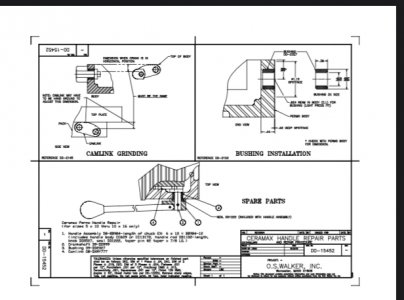...But trying to find the center of a worn out shaft on a part that is also worn and or not “square” ....
This is where it gets good. It takes a little practice to get into the state of mind, to focus on what you DO know, and figure out how you're gonna figure out what you don't know. Study the part. Is there any milling/machining marks that might identify the center during manfuacture? Is there ANY unworn part of any part of it? In your first picture, to the right side of the offset "pin", what's that shiny spot? Would that be of any value to extrapolating the original dimsnsions, or is that collateral damage from whatever was riding on it? What does your offset shaft do, does that give you a clue as to the required travel? What does the bearing/bushing, or whatever rides on the journal tell you? Are you making both parts? Do you care what the dimensions are? How much travel does the rest of the thing need to work properly? If you take that amount and look back to your worn part, is that plausible? How much tolerance is there in said travel? Is that offset running a connecting rod in an oilless compressor? What's the distance of the wear scar minus the width of the shiny surface on the fake leather ring? That's your "throw", and half of that is the offset you're looking for. How close does the tolerance need to be to keep the piston from hitting the head/valve plate. Is that offset changing a range gear in a gearbox? Where's the wear pattern on the teeth of said gear, and how much does it shift to match wear patterns from one running position to the other? That's your throw, and half of that is the offset. How much wiggle room do you have before the sliding gear fouls another part? It might not need to be perfect. You've got to understand and accept that there will be successes, and there will be failures. Some failures are legit worth asking about, and some are gonna be such that you're gonna have to look over your shoulder, make sure nobody saw you, and promptly cut the failed attempt into chips so that nobody can ever recognize what you just did... It's all part of the game. Just do what it takes to never forget that you don't know, but NOT focus on what you don't know, Focus on what you do know. Once you "get" that mindset, these problems become a lot more enjoyable, and a lot less of a chore.


